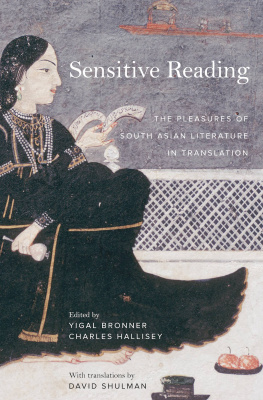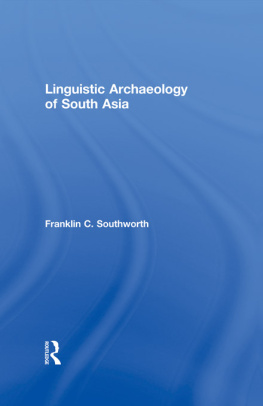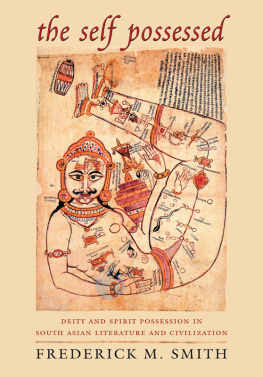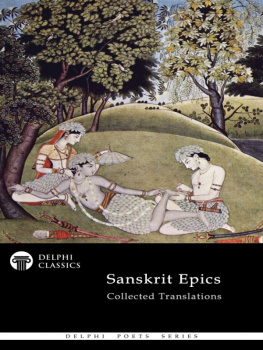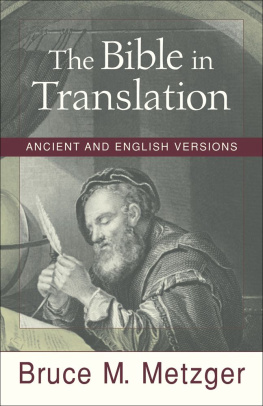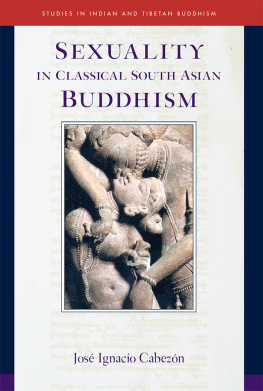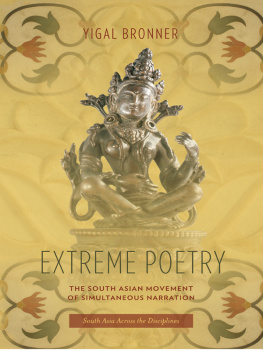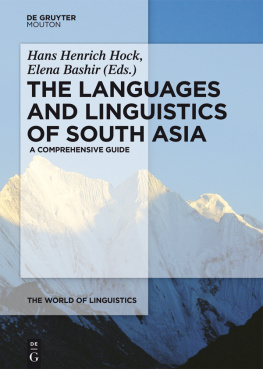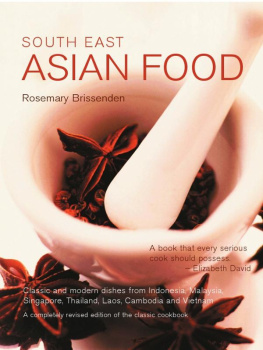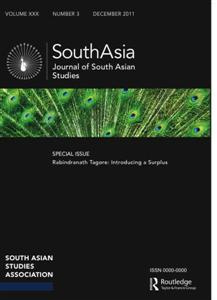Contents
Luminos is the Open Access monograph publishing program from UC Press. Luminos provides a framework for preserving and reinvigorating monograph publishing for the future and increases the reach and visibility of important scholarly work. Titles published in the UC Press Luminos model are published with the same high standards for selection, peer review, production, and marketing as those in our traditional program. www.luminosoa.org
The publisher and the University of California Press Foundation gratefully acknowledge the generous support of the Joan Palevsky Endowment Fund in Literature in Translation.
Sensitive Reading
Sensitive Reading
The Pleasures of South Asian Literature in Translation

Edited by
Yigal Bronner and Charles Hallisey
Translations by
David Shulman

UNIVERSITY OF CALIFORNIA PRESS
University of California Press
Oakland, California
2022 by The Regents of the University of California
This work is licensed under a Creative Commons CC BY-NC-ND license. To view a copy of the license, visit http://creativecommons.org/licenses .
Suggested citation: Bronner, Y. and Hallisey, C. Sensitive Reading: The Pleasures of South Asian Literature in Translation . Oakland: University of California Press, 2022. DOI: https://doi.org/10.1525/luminos.114
Library of Congress Cataloging-in-Publication Data
Names: Bronner, Yigal, 1966 editor. | Hallisey, Charles, 1953 editor. | Shulman, David Dean, 1949 translator, writer of added commentary.
Title: Sensitive reading : the pleasures of South Asian literature in translation / edited by Yigal Bronner and Charles Hallisey ; with translations by David Shulman.
Description: Oakland, California : University of California Press, [2021] | Includes bibliographical references and index.
Identifiers: LCCN 2021029647 (print) | LCCN 2021029648 (ebook) | ISBN 9780520384477 (paperback) | ISBN 9780520384484 (epub)
Subjects: LCSH: South Asian literature Translations into English. | South Asian literature History and criticism. | BISAC: LITERARY COLLECTIONS / Asian / Indic | LANGUAGE ARTS & DISCIPLINES / Translating & Interpreting
Classification: LCC PK85 .S46 2021 (print) | LCC PK85 (ebook) | DDC 891/.1 dc23
LC record available at https://lccn.loc.gov/2021029647
LC ebook record available at https://lccn.loc.gov/2021029648
31 30 29 28 27 26 25 24 23 22
10 9 8 7 6 5 4 3 2 1
CONTENTS
Yigal Bronner and Charles Hallisey
Introduction
Yigal Bronner and Charles Hallisey
ALLOW US TO RESTATE THE PROBLEM
So you find yourself with a translation in your hands. This one, for instance:
The king stares, unblinking, at your portrait
on the wall, drinking you in
with eyes red from tears
or maybe its from the fire
youve lit inside him.
The questions start. Who is this crying king? Who is the speaker? Who is the you being addressed? More questions follow, but of a different kind. Where does this come from? What is the texts name? In what language? Who wrote it? When? These are all good questions, and there are good answers to be had for them. But notice how your mind is off and running. Running away from the text.
What comes next in the translation may make you stop in your tracks:
Allow me to restate this problem:
1) Hes studying that painting of you
2) Unblinking
3) With deep attention and affection.
4) There are tears in his eyes.
5) Those tears are mine, says the eye. Thats what happens
if you dont blink.
6) No way, says Love. Theyre all mine.
7) This dispute remains
unsolved.
Note that this second verse does what it says: it restates the first. It stays with it, closely, but it also adds something. It asks what it means to stare, unblinking. What it means to have a fire lit inside you. These, too, are good questions, but where are answers to be found for them? Actually, nowhere but here. Answers present themselves when the act of looking and crying is redescribed as an unsolved dispute between the eye and Love. Did you see this coming?
We didnt.
This volume shares what we discovered after our initial surprise. It is all about the pleasures of reading and rereading translations with unblinking eyes.
Its common knowledge that we live in a boomtime for translations. There are publishers dedicated to making literatures of one culture available to readers from another; universities teach courses like Japanese Literature in Translation and Introduction to World Literature; there are literary prizes given to translators. Good translations are there, but less available is help in reading them. Ezra Pound published his ABC of Reading a century ago, but there is still no ABC of Reading Translations .
The situation is particularly dire for English translations of texts from South Asia: there is finally a growing body of such works, from masterpieces brought out by the Murty Classical Library of India to contemporary poetry and prose, but hardly any guidance on how to read them and especially how to enjoy them.
This volume is offered as a first step in that direction, although even this first step makes it clear that there are many good ways of reading translations. Let us turn again to the translation at hand, which, by the way, is from Life of Naishadha , a Sanskrit poem composed in the twelfth century by a celebrated poet, Shriharsha. As a whole, Life of Naishadha narrates a story that was already famous when it was written, the love story of Nala and Damayanti with its many twists and turns. But lets not be too quick to go away from the text again. Lets stay with Shriharsha and go to his next verse, which again revisits the scenario of the previous two. Nala is still gazing at a painting of her, Damayanti is told. We, however, also hear some suggestions about what we should expect of ourselves when we read a translation of a text like this:
You, lady, live in his heart,
but youre also somehow outside him,
in fact youre his very lifes breath
moving through nose and mouth.
His mind, too, being utterly absorbed
in you, never budges from that wondrous
painting, and this, too,
is a wonder.
We know that when we are utterly absorbed in reading, something from the outside comes to life in our heart too. The object of such rapt attention is wondrous, but so is what happens to us.
We are among the first to admit that what happens to us when we read translations, however, is often less than wondrous. This may be more about us than about the translations themselves. We are suspicious, and we justify our suspicions with the old saw about what is lost in translation. We, in fact, worry about being deprived of the authentic experience of the original, instead receiving a kiss through a veil, as the Hebrew poet Bialik once dubbed translation. Or it may be that our awareness of how much we dont know gets in the way. Then our good intention to learn more about another culture may overshadow the text to such an extent that we deny ourselves any of the usual pleasures of reading and prevent ourselves from imagining that it might have something to say to us.
Finally, we may worry about what the translator has added. Translators do add things, of course, just as much as they leave things out. What they add may be more valuable to us readers than we might assume, especially when what they add opens up the original text to us, sharing with us its pleasures and its possibilities.
Some might say that in the second verse of the poem quoted here, the opening line, Allow me to restate this problem, is an addition. Those exact words are not in the original Sanskrit text, thats for sure. At the same time, the translation only makes explicit what is tacit in the original; namely, that the poet Shriharsha recasts in this second verse all the key players of the first one, using the very same lexical items but in a different key. As one of Shriharshas most sensitive readers, the fourteenth-to-fifteenth-century Sanskrit commentator Mallinatha noted: he repeats the very same thing with a different twist. Something is learned in the restatement, and there is also pleasure when the elegance of the different twist is highlighted. By adding the line Allow me to restate this problem, the translator, David Shulman, who did all the translations for this volume, has shared with us his own pleasure in seeing this twist, which, in fact, is a pleasure given by the text itself with its own habits of self-translation and reiterations. Shulmans translation thus allows us to appreciate the text through his appreciating eyes; to read following the mind of a sensitive reader.

